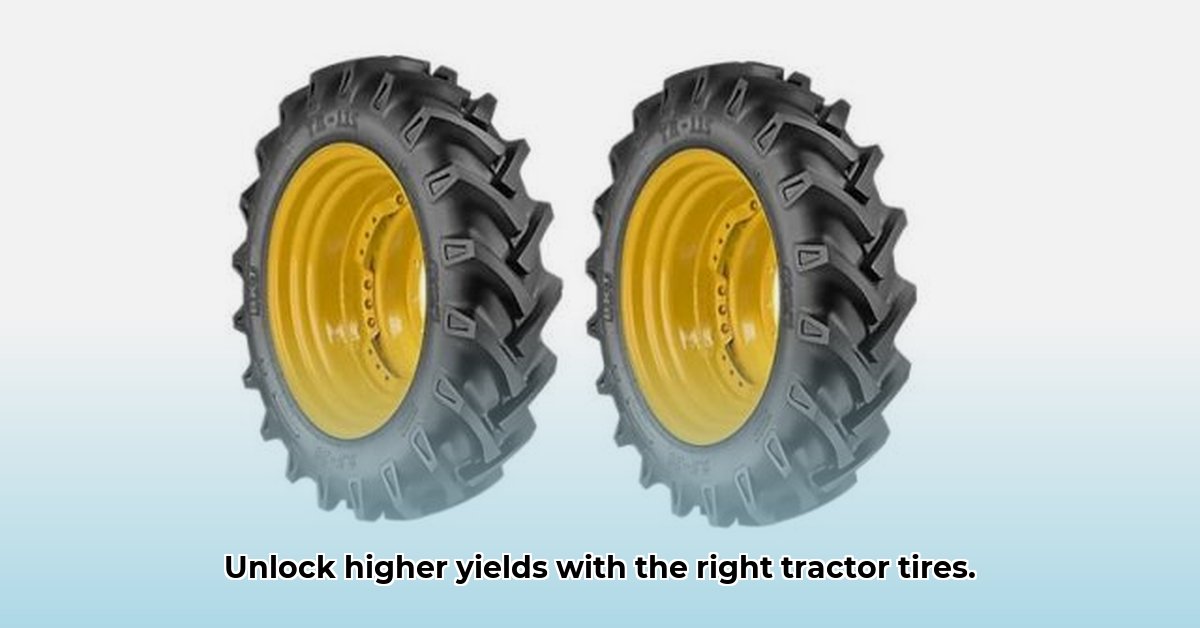
Choosing the right tractor tires is crucial for maximizing yields and minimizing operational costs. This comprehensive guide focuses on 13.6-28 tractor tires, providing insights for farmers, manufacturers, and retailers alike. We'll cover essential technical specifications, comparative analyses, decision-making frameworks, and future trends to empower informed purchasing decisions. For added traction, consider tire chains.
Understanding Your Farming Operation: A Foundation for Tire Selection
Before diving into technical details, it's vital to assess your unique farming needs. What types of soil do you work with? Heavy clay requires different tire characteristics than light, sandy loam. What are your typical loads and hauling requirements? Are you predominantly operating in fields, on roads, or a combination of both? These factors dictate the ideal tire specifications for optimal performance and longevity. Do you prioritize soil preservation to prevent compaction, or is maximum traction in challenging conditions your primary concern?
What is the primary use case determining your tire needs? (ie. Field Work vs Road Transport)
Decoding 13.6-28 and Beyond: Key Tire Specifications
The "13.6-28" designation indicates a tire width of 13.6 inches and a rim diameter of 28 inches. However, this is just the beginning. Several other factors significantly influence tire performance and lifespan:
Radial vs. Bias-Ply Tires: A Performance Comparison
Radial tires offer superior fuel efficiency and a smoother ride due to their flexible sidewalls and reduced rolling resistance. However, bias-ply tires often exhibit greater durability and are typically more affordable initially. The choice depends on the prioritization of fuel efficiency versus upfront cost and robustness.
What is the optimal balance between fuel efficiency and tire longevity for your operation?
Tread Patterns: Matching Grip to Terrain
Tread patterns are crucial for traction and mud shedding. Deep, aggressive lugs provide maximum grip in challenging conditions, while open patterns minimize mud buildup and improve self-cleaning. The ideal pattern depends on your soil type and climate. Farmers in consistently wet or muddy conditions may require tires with deep lugs, whereas those in drier climates may benefit from open-tread designs.
What tread pattern aligns best with your predominant soil conditions?
Load Capacity: Ensuring Safe Operation
The load capacity, measured in pounds, indicates the maximum safe weight a tire can handle. Exceeding this limit risks premature tire wear, potential blowouts, and safety hazards. Always consult your tractor's manual for the appropriate load capacity for your 13.6-28 tires.
Is your current load capacity being optimized relative to your tire selection?
Tire Construction and Materials: A Deeper Dive
Modern 13.6-28 tires employ advanced rubber compounds and reinforced sidewalls to enhance durability and resistance to damage. Higher-quality materials contribute to a longer lifespan and improved performance. Understanding the construction materials is crucial for evaluating long-term value and minimizing replacement costs. Do your current tires reflect an appropriate balance of cost and performance?
"The materials used directly impact tire durability and cost-effectiveness," states Dr. Emily Carter, Agricultural Engineering Professor at Purdue University.
Comparative Analysis: Choosing the Right Tire for Your Needs
Several manufacturers produce 13.6-28 tires, each with varying specifications and price points. A comprehensive comparison is vital. Consider factors beyond initial cost such as warranty terms, availability, and comprehensive performance data. Online reviews can be a valuable resource but should be corroborated with information from reputable sources like your equipment supplier or agricultural extension service.
“Don't solely focus on price; consider the long-term cost of ownership,” advises John Miller, owner of Miller Farm Equipment.
| Feature | Tire A | Tire B | Tire C |
|---|---|---|---|
| Load Capacity (lbs) | 2800 | 3000 | 2500 |
| Tread Pattern | Aggressive Lug | Open Pattern | Moderate Lug |
| Radial/Bias Ply | Radial | Bias-Ply | Radial |
| Price | $$$ | $$ | $ |
| Warranty (Years) | 4 | 3 | 2 |
A Step-by-Step Guide to Selecting 13.6-28 Tractor Tires
- Assess Your Needs: Carefully evaluate your farm's soil type, typical loads, and climate.
- Gather Specifications: Obtain detailed specifications from manufacturers, paying attention to load capacity, tread pattern, and construction.
- Compare and Contrast: Develop a comparison chart to evaluate different options based on price, performance, warranty, and your individual requirements.
- Consult Experts: Discuss options with experienced farmers or agricultural equipment dealers.
- Make an Informed Decision: Combine your research with expert advice to choose the best tires for your needs and budget.
Maintaining Peak Performance: Essential Tire Care Practices
Regular maintenance is crucial. This includes:
- Regular Inflation Checks: Maintain proper inflation pressure to optimize fuel efficiency and tire life.
- Impact Avoidance: Avoid driving over obstacles that could damage your tires.
- Regular Inspections: Periodic checks for cuts, wear, and other damage prevent costly problems.
The Future of 13.6-28 Tractor Tires: Emerging Trends
The industry is constantly evolving, with innovations focusing on:
- Sustainable Materials: Environmentally friendly materials minimize the environmental footprint.
- Improved Designs: Designs aim to reduce soil compaction without sacrificing traction.
- Smart Tire Technology: Sensors monitor tire pressure, temperature, and wear, providing real-time data for improved management.
By carefully considering your specific farming operation and following this guide, you can select the optimal 13.6-28 tractor tires, resulting in increased efficiency, reduced costs and higher yields. Remember, continuous learning and staying informed about the latest advancements in tire technology are vital for ensuring optimal performance and long-term success.